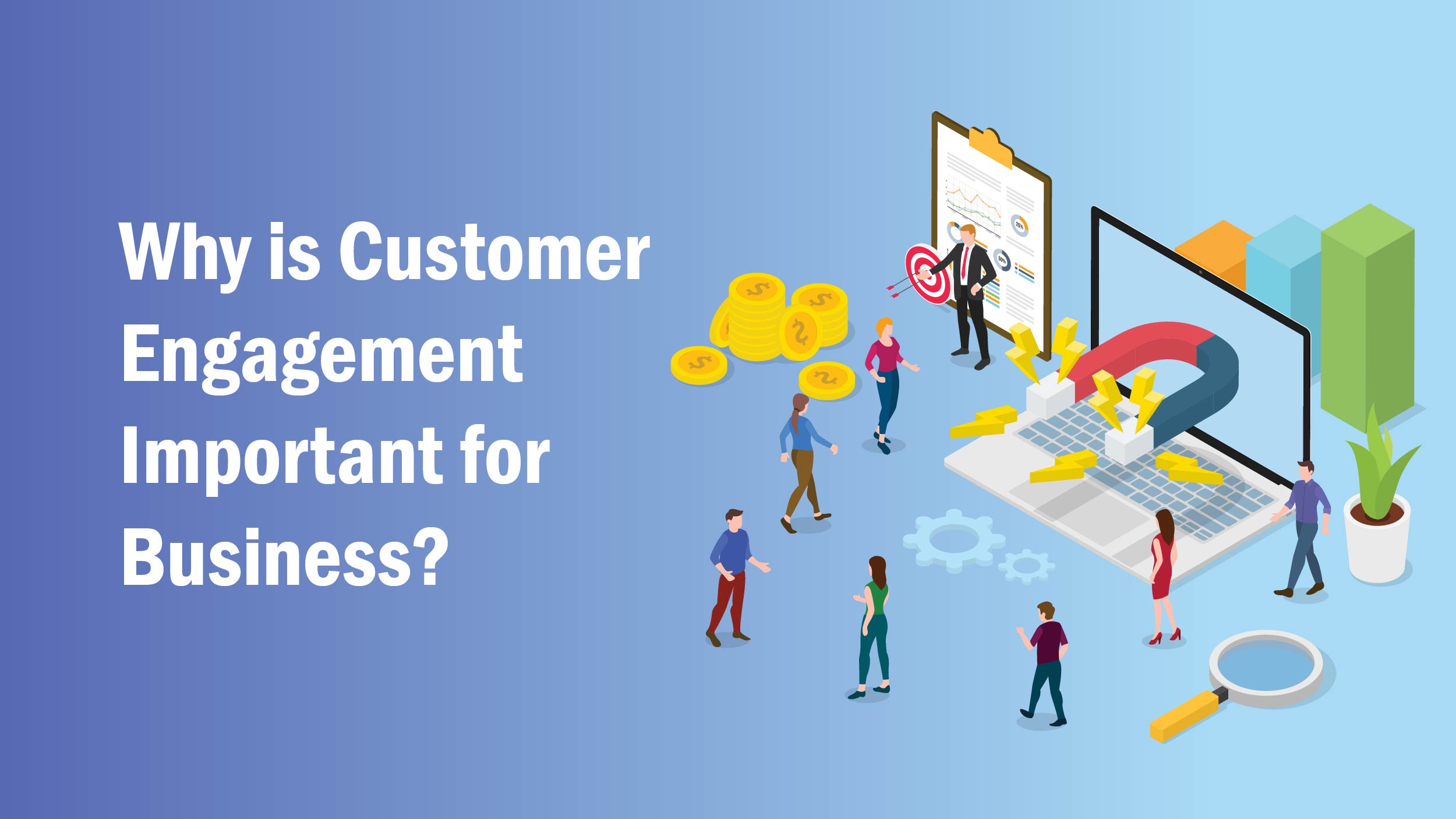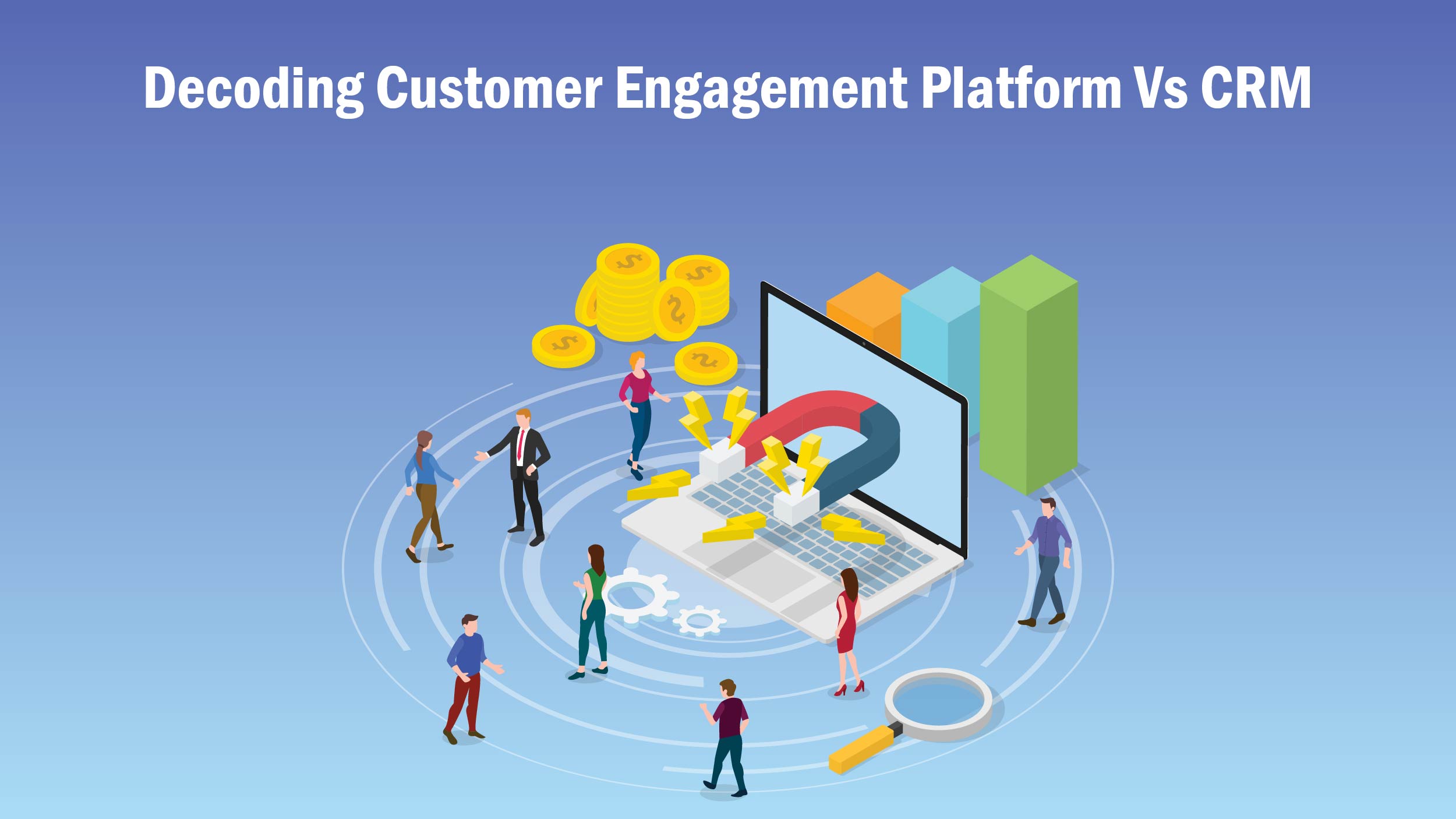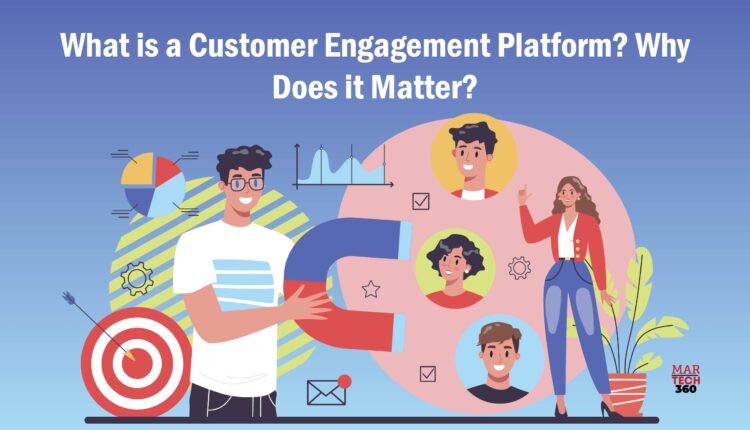Imagine you liked a product or service from a company and asked them a question about it. However, they did not respond at all. Would you still be considering that brand?
A big no, right?
This is exactly why a customer engagement platform is important. Research indicates that 49% of consumers purchase products on impulse after getting a great personalization experience.
This article explains why your business must consider customer engagement to form better relationships with your audience.
What is Customer Engagement?
Establishing a relationship with customers that extends beyond a simple transaction is known as customer engagement. It’s a deliberate, methodical strategy used by a business to add value to every contact with customers, boosting loyalty.
Although there is considerable overlap, customer engagement, customer interaction, and customer experience are different concepts. Later on, we’ll go into much more detail on these ideas, but for now, you should know that customer experience is the impression that customers get of your business from everything they see, hear, or read.
86% of consumers will pay extra for superior customer service. This is more or less equivalent to free money, you just have to give a great customer experience.
Why is Customer Engagement Important for Business?
 Businesses and other organizations significantly benefit from implementing successful customer engagement strategies. For instance, creating personalized customer experiences can foster long-term loyalty and positive brand perception within the market.
Businesses and other organizations significantly benefit from implementing successful customer engagement strategies. For instance, creating personalized customer experiences can foster long-term loyalty and positive brand perception within the market.
- Customer Retention: Acquiring new customers can sometimes come at a higher cost compared to retaining them. The cost of customer acquisition can greatly exceed that of customer retention. By implementing effective strategies for engagement, businesses can prolong the customer journey, moving beyond the initial interaction or purchase and significantly reducing churn rates. Engaged customers often transition into valuable repeat buyers.
- Brand awareness: Brand awareness refers to the level of familiarity and recognition that consumers have with a particular brand. It represents the extent to which a brand is known by its target audience and is an essential component of a successful marketing strategy.
- Loyal customers: Cultivating emotional connections with customers is a key factor in boosting loyalty towards brands. These loyal clients can also transition into enthusiastic promoters and trusted brand advocates for businesses. This can be done by actively listening to customer feedback and coming up with proactive measures to integrate that feedback.
- Lasting Customer Experience: Creating an outstanding customer experience extends beyond a single transaction; it boosts satisfaction and drives sales. A robust customer journey optimizes every interaction point between the individual and the organization, including user-friendly websites, compelling content sharing, and prompt customer service. Marketing focused on the customer experience is instrumental in managing these interactions.
- Anticipating customer needs: This plays a pivotal role in cultivating robust client engagement. By actively embracing efficient customer service strategies and consistently monitoring customer feedback, companies gain profound insights into customer behavior, needs, and preferences. These insights catalyze innovation, leading to the development of new products and services that are finely tuned to meet and exceed customer expectations.
Also Read: B2B Customer Experience: Everything You Need to Know in 2024
What are the 4 P’s of Customer Engagement?
The concept of the 4 Ps of customer engagement serves as a foundational framework that empowers businesses to grasp and execute effective strategies for engaging with their customer base.
Product: When a business sets out to thrive, the very first aspect (P) in the equation pertains to the product or service it extends to its customers. It’s all about tuning in to the needs and tastes of the customer base and devising solutions that cater precisely to those requirements. A top-notch, meticulously crafted product stands as the cornerstone for attracting and retaining customers and nurturing a profoundly positive customer journey.
Price Tag: The second component of the marketing mix revolves around the pricing strategy applied to a product or service. Setting prices plays a critical role in engaging customers, as it influences their perceived value and purchase behavior. Businesses must navigate finding the proper equilibrium between competitively pricing their products while also acknowledging customer views on value and affordability.
Place: The third P delves into the realm of distribution channels and physical touchpoints that serve as gateways for customers to engage with products or services. It revolves around identifying the most seamless and accessible channels for customers to interact with the brand, whether through traditional brick-and-mortar establishments, modern digital platforms, or a fusion of both avenues.
Promotion: This is part of the marketing mix’s fourth P hinges on effectively communicating and interacting with customers. It encompasses a range of marketing strategies and advertising initiatives aimed at building awareness, generating interest, and stimulating customer engagement. These promotional activities are executed through various channels, including social media, email marketing, content marketing, and traditional advertising methods.
When businesses strategically optimize these four key elements, they pave the way for developing a well-rounded engagement strategy that resonates with the preferences, needs, and behaviors of their customers.
Top 5 Customer Engagement Platforms
Below are five popular customer engagement platforms:
Salesforce Customer 360: Salesforce Customer 360 is a comprehensive customer engagement platform that offers a range of tools and solutions for managing customer relationships, sales, marketing, and service. It provides a unified view of customer data, enabling businesses to personalize interactions and deliver seamless experiences across multiple channels.
HubSpot: HubSpot is a widely used customer engagement platform that offers a suite of tools for marketing, sales, and customer service. It provides features such as email marketing, social media management, live chat, and customer relationship management (CRM) capabilities, all aimed at enhancing customer engagement and nurturing relationships.
Zendesk: Zendesk is a customer service and engagement platform that helps businesses manage customer support interactions across various channels, including email, chat, phone, and social media. It offers features like ticketing systems, knowledge bases, and customer self-service options, enabling businesses to provide efficient and personalized support experiences.
Adobe Experience Cloud: Adobe Experience Cloud is a comprehensive platform that combines marketing, analytics, and advertising tools to deliver personalized and engaging customer experiences. It offers capabilities for data management, content creation, campaign management, and customer journey mapping, empowering businesses to create targeted and impactful customer engagements.
Intercom: Intercom is a customer messaging platform that enables businesses to engage with customers through personalized, real-time conversations. It offers features like live chat, chatbots, email marketing, and customer segmentation, helping businesses deliver proactive and relevant communications to drive customer engagement and satisfaction.
These platforms are just a few examples, and there are many other customer engagement platforms available in the market. It’s important to evaluate your specific business needs, budget, and desired features when selecting a customer engagement platform.
Decoding Customer Engagement Platform Vs CRM
 Customer engagement platforms (CEPs) and customer relationship management (CRM) systems serve different purposes in managing customer interactions. CRM systems primarily focus on organizing and managing customer data, while CEPs are comprehensive solutions that aim to enhance customer interactions across multiple channels and touchpoints.
Customer engagement platforms (CEPs) and customer relationship management (CRM) systems serve different purposes in managing customer interactions. CRM systems primarily focus on organizing and managing customer data, while CEPs are comprehensive solutions that aim to enhance customer interactions across multiple channels and touchpoints.
CRM systems provide a centralized database for storing customer information and help optimize marketing, sales, and customer support processes based on that data. On the other hand, CEPs go beyond data management and prioritize customer engagement. They leverage data insights to deliver targeted and personalized interactions, creating meaningful experiences for customers. CEPs often integrate data from various sources to provide a unified view of the customer and enable seamless, personalized engagement.
Final Takeaway
Customer engagement platforms play a vital role in modern business strategies by enabling organizations to effectively interact, communicate, and build relationships with their customers. These platforms provide a range of tools and solutions to streamline customer interactions, enhance personalization, and deliver seamless experiences across multiple touchpoints.


Comments are closed.